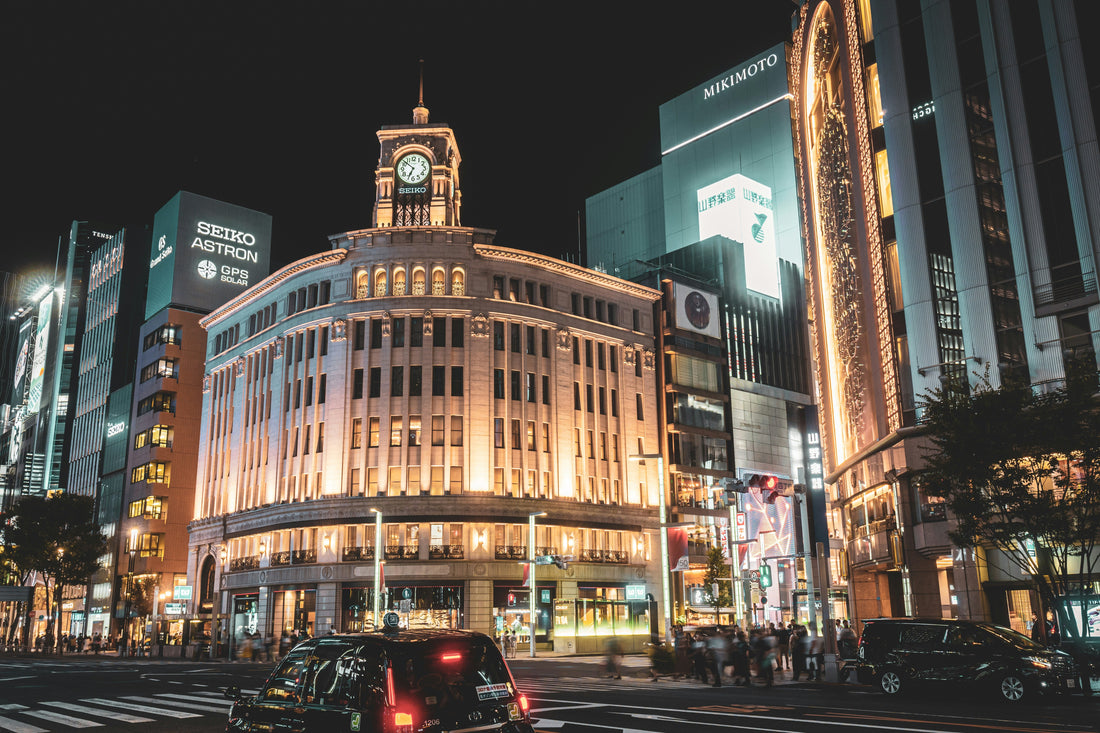Reading material
The history of Ginza

The History of Ginza - The Story of Japan's Most Iconic Town from the Edo Period to the Present
When you hear "Ginza," what immediately comes to mind is Japan's leading luxury shopping area. It's famous for being lined with world-famous brands and bustling with tourists and shoppers, but if you trace its history back, you'll find that it has undergone repeated changes and development for over 400 years. Learning about the history of Ginza not only helps you understand the origins of the area, but also helps you understand Japanese culture and its progress toward modernization.
The Edo Period - The Origin of the Name "Ginza"
The history of Ginza dates back to 1612, in the early Edo period. The name Ginza comes from the fact that the Edo Shogunate established its silver coin mint, the Ginza Government Office, here. At the time, Ginza was the center of finance and distribution, and developed into a bustling shopping district where merchants and craftsmen gathered. Despite experiencing fires and urban development, it became widely known as an important commercial area that supported the economy of Edo.
Meiji Era - Ginza Brick Town, a symbol of modernization
The great fire of 1872 marked a major turning point for Ginza. As a "symbol of modernization," the government developed a Western-style brick streetscape. This became the famous "Ginza Brick Town." The modern landscape, with its tree-lined streets and gas lamps, was a symbol of the modernization of Japan, and many people began to visit Ginza with aspirations. Newspaper companies and publishing companies also gathered there, and Ginza began to play a role not only as a commerce hub but also as a cultural hub.
From the Taisho to the Showa Eras - Modern Culture and the Birth of Ginza 4-Chome Crossing
In the Taisho era, Ginza came into the spotlight as the "center of modern culture." Lined with clothing stores, cafes, and movie theaters, it became a bustling town where modern girls and boys gathered. In the Showa era, department stores such as Mitsukoshi and Matsuya became the face of Ginza, and during the post-war reconstruction period, it developed again as a neon-lit town. The clock tower at Ginza 4-Chome intersection remains a landmark that symbolizes Tokyo to this day.
Modern times - a city where global brands and tradition coexist
Today's Ginza is home to a collection of global luxury brands and the latest commercial facilities, but it also boasts long-established Japanese confectionery shops and traditional craft stores. In addition to large department stores such as Wako, GINZA SIX, Matsuya Ginza, and Mitsukoshi Ginza, small shops with a sense of history remain in the back alleys, creating a landscape where tradition and innovation are in harmony. It is highly popular among tourists as a town where you can enjoy Japanese culture and the latest trends at the same time.
The timeless charm of Ginza
Looking back at the history of Ginza, we can see that while it has changed with the times, it has always remained a "town that transmits culture and trends." During the Edo period it was a commercial town, during the Meiji period it was a symbol of civilization and enlightenment, during the Taisho and Showa periods it was a source of modern culture, and today it is an international luxury district. Throughout this constant change, what remains at the heart of it is the "spirit of embracing new things while cherishing Japanese traditions."
summary
Throughout its 400-year history, Ginza has reflected the development of Japan's culture and economy. Even today, the name "Ginza" has a special meaning for Japanese people, and is one of the districts that symbolizes Tokyo for people around the world. The more you learn about its history, the more enjoyable it becomes to walk through Ginza.
BONGEN COFFEE | OFFICIAL SITE
https://ginza-bongen.jp/